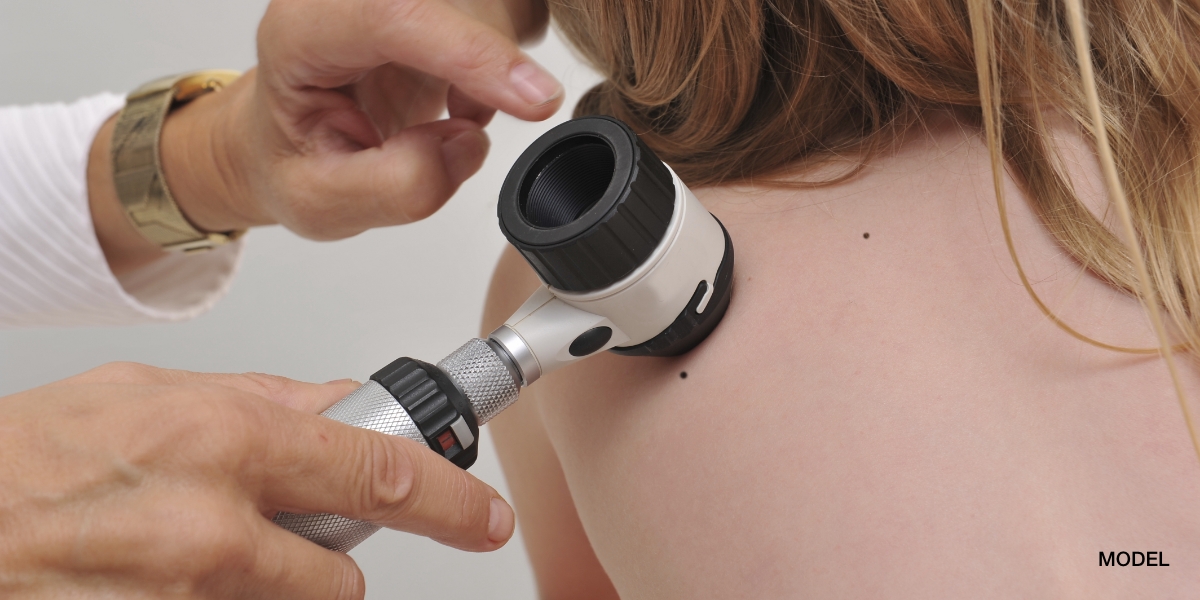Seborrheic Dermatitis (Seborrhea) is the most common rash that I see in both my Conroe dermatology clinic and my Woodlands dermatology offices. In a typical day, 5 to 10 patients present with Seborrhea. Seborrhea is a rash that has a predilection for the scalp, face (T-zone area), ears, neck, axillae, chest, umbilicus, buttocks and groin. It usually begins in the scalp and progresses down the body in a cephalo-caudal pattern. There is no specific cause to seborrhea, which appears as a red scaly rash. The skin appears very dry in the areas with seborrhea, but the lesions are actually too greasy as they have a very high concentration of sebum/oil. Many patients make the mistake of treating seborrhea with moisturizing creams, which only worsens the problem. The lesions of seborrhea are very inflamed and it is this inflammation that must be treated to cause seborrhea to go into remission. The late teens and 20’s are usually the first time seborrhea appears although babies get seborrhea as well in a form called “cradle cap.” Dandruff is the by product of seborrhea in which the lesions get very scaly and these scales fall off the scalp as white flakes. Most people have a naturally occuring yeast that lives on their skin called Pityrosporum ovale, which may cause this inflammation, but in most cases there is no specific cause to pinpoint. Stress may be the most potent exacerbating factor for seborrhea as it can frequently cause flare ups. In some medical conditions such as Parkinsonism and HIV disease, seborrhea can arise de novo and be extremely severe and recalcitrant to treatment. Seborrhea is a cousin of psoriasis and many times the lesions of seborrhea appear very similar to psoriasis, thus they are labelled sebopsoriasis. I believe seborrhea lies on the better end of a spectrum of papulosquamous diseases that can progress to psoriasis if left untreated. There is also a genetic component to seborrhea as many patients with seborrhea have parents who also are afflicted with this skin disease. In vary rare cases, seborrhea can become so extensive that it becomes erythrodermic and the entire body is covered in red scaly plaques with no apparent “normal” skin.
September 10, 2010

Medically reviewed by Anthony J. Perri, M.D.
You May Also Like



Request a Consultation (Sidebar)
Recent Posts
Categories
- Uncategorized (512)
Tags
acne (6)
acne treatment (3)
acne vulgaris (2)
basal cell carcinoma (2)
biopsy (3)
cold urticaria (1)
common skin conditions (11)
dermatologist (15)
dermatology (7)
dr. perri (8)
dry skin (1)
eczema (2)
filiform (1)
health (3)
Herpes (1)
herpessimplex (1)
hives (2)
indentification (1)
keratosis pilaris (1)
Lichen Planopilaris (1)
melanoma (2)
moles (3)
periungual (1)
perri dermatology (10)
prevention (2)
rashes (2)
rosacea (3)
rosacea therapy (2)
skin cancer (6)
skin cancer screening (5)
skin care (2)
skin checks (8)
skin condition (6)
skin conditions (8)
skin damage (2)
skin exam (8)
summertime (3)
sunburn (3)
sunburns (2)
Sunprotection (1)
sunscreen (2)
virus (1)
warts (2)
why perri dermatology (3)
woodlands dermatologist (6)
